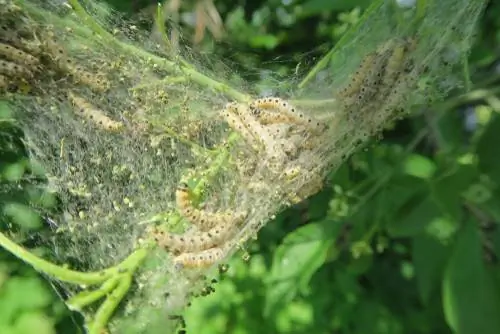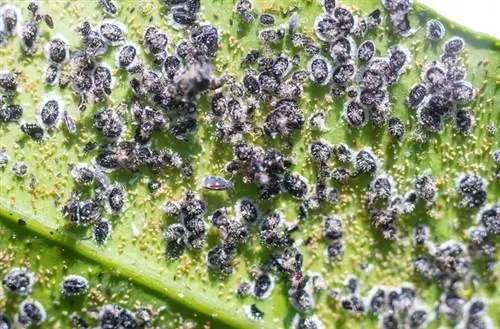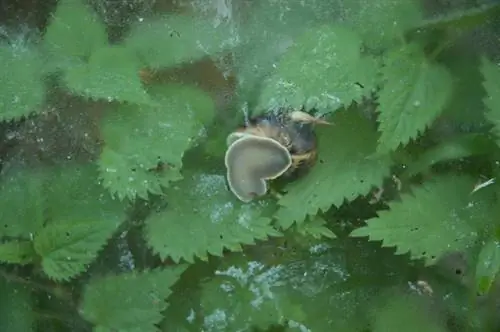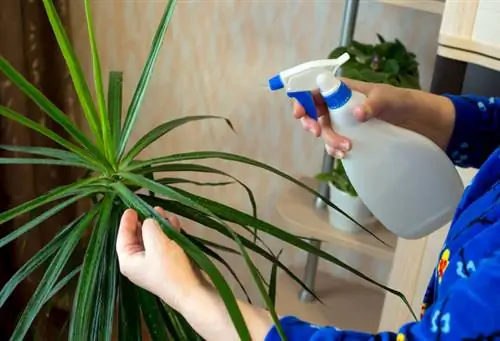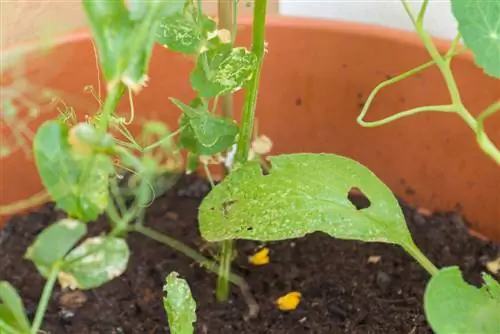- Author admin [email protected].
- Public 2023-12-16 16:46.
- Last modified 2025-01-23 11:22.
The Pfaffenhütchen is considered a robust tree that is hardly affected by diseases or pests. When conditions are suboptimal, three pest infestations can occasionally occur:
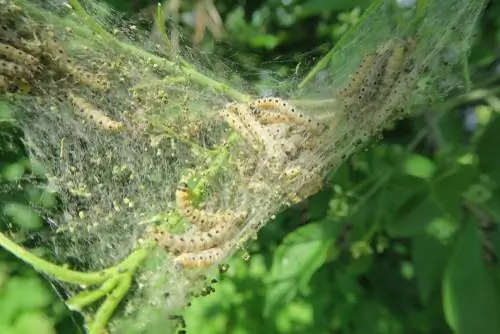
Which pests attack the Pfaffenhütchen and how can you combat them?
The most common pests on the Pfaffenhütchen are the Pfaffenhütchen web moth, the felt gall mite and the spindle tree scale insect. You can remove and dispose of infected plant parts, promote natural enemies or scratch the pests from leaves and shoots.
- Pfaffenhütchen web moth
- Felt gall mite
- Spindle tree scale insect
Pfaffenhütchen web moth
This moth uses the spindle bush as a host plant for laying eggs. The larvae develop fine webs that sometimes extend over the entire bush. They feed on the leaf mass and can eat the bush completely bare. Since the larvae pupate until the second leaf shoots, the spindle bush recovers quickly from an infestation.
Felt gall mite
This pest settles on the underside of leaves to suck the cell sap from the veins. An infestation can be recognized by whitish, felty hairs that can extend from the central vein across the entire underside of the leaf. The top often appears yellowed, but in most cases remains unchanged.
The mites live sociably in the felty hair structure. They are 0.1 to 0.2 millimeters in size and can only be seen under a microscope. Overwintering takes place in the buds of the Pfaffenhütchen or in cracks on the bark. If the infestation is severe, leaves may fall. Normally felt gall mites do not cause any major damage and do not need to be controlled.
Spindle tree scale insect
This pest has been appearing increasingly on Pfaffenhütchen since the 1990s and sometimes causes major damage. The Japanese spindle bush (Euonymus japonicus) is particularly affected. The scale insect spreads in dry and warm conditions. Potted plants are attacked more often than outdoor trees. The first signs of an infestation are light colored dots on the top of the leaves. Under favorable conditions, the pests spread rapidly throughout the entire shrub.
The females are fertilized in autumn and overwinter on the bush. In spring they lay up to 50 eggs under their shield, from which orange-yellow colored larvae hatch from June. These are mobile and spread on the leaves to suck out the cell juice. In the event of a severe infestation, the plant can be weakened, resulting in premature leaf fall.
This is what you can do:
- Cut off plant parts and dispose of them
- Scratching signs from leaves and shoots
- encourage natural enemies such as ladybirds and lacewings

